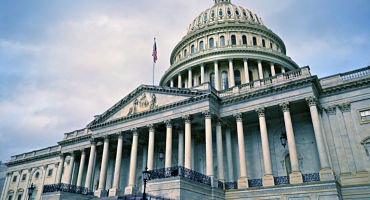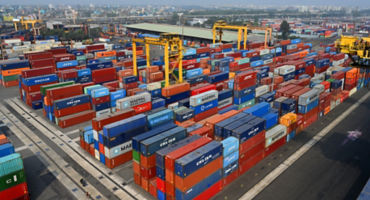- China has given developed markets a free pass again, bringing down commodity prices and goods inflation like it did from 1995 to 2007, but this is unlikely to persist. A weak China has masked high core inflation in most developed economies and has, in turn, allowed those central banks to cut interest rates despite still tight labour markets. However, this may be about to change as China responds to domestic economic weakness and the US saying that it won’t accept China exporting its disinflation, with other countries possibly following suit. Goods inflation has therefore likely reached a floor.
3 Higher nominal growth should be positive for risk assets
With loose policy, tight labour markets and higher neutral rates, the implications are straightforward, and that’s before tariffs come into play. Real growth, nominal growth and inflation should be higher in 2025 than 2024 across developed and emerging markets. Central banks should cut interest rates less than the market is pricing, but that repricing is associated with likely upgrades to nominal growth. Normally, a higher nominal growth outlook is a positive signal for risk assets, which should keep rallying. Regionally, risk assets in the euro area and China are the least priced for this outlook and should rally the most in this scenario.
4 The return of risk premia
The continued scale of government deficits and the determination of central banks to prevent a downturn represent risks to the “normal” relationship of higher nominal growth translating into higher asset prices. Risk assets are likely to rally in this outcome until the market wakes up to the fact that policymakers are keen to stimulate growth and accept the inflationary consequences — and then, in return, demands more risk premia to be priced into assets. That is the biggest threat to equities — that these dynamics lead to a risk-premia-driven, rather than growth-induced, rise in bond yields. The risk that the market does the tightening the central banks don’t want to or can’t deliver becomes even more pronounced if the threat of higher tariffs and protectionism materialises. A worse global growth/inflation trade-off would make government deficits look less sustainable and central bank policy accommodation more “irresponsible”.
The US election outcome has complicated this picture further, as it potentially quickens the speed at which the market engages with these conclusions but also potentially narrows the benefits. Obviously, much will depend on critical questions around the shape of the new administration and the pace of policy decisions, but the bottom line is that the US will likely be adding more demand — through fiscal policy — into the notable negative supply shocks of tariffs and emigration that will increase the bargaining power of existing workers. It plays to our medium-term structural theme of more volatile cycles, inflation-led nominal growth and structurally higher long-term rates. It also threatens to accentuate regional macro disparities. The market knows that exporters, especially Europe and China, will be the relative losers. However, countries and policymakers are rarely static, creating further uncertainty.
5 Growing differentiation between countries and regions
Another key theme for 2025 and beyond will be greater differentiation between countries, with less correlation between markets and greater policy divergence. As globalisation takes a different, more reduced form, the value of understanding the local markets goes up and, with it, the opportunity set that active investors can tap into.
China is the wild card. The US imposing significant tariffs will clearly be a significant hit to growth, but how China responds is equally important. Does it choose to export its excess capacity to other economies instead? In this scenario, higher inflation in the US would then mean lower inflation elsewhere. Does China respond with a significant fiscal, monetary and currency response to insure against the downside tail? Probably. If it doesn’t, the risk of precipitating a financial crisis is real.
The euro area is particularly vulnerable. The business model of Germany, the euro area’s largest stakeholder, is broken as the country is no longer able to export goods produced with cheap, imported energy. The US imposing tariffs dismantles Germany’s business model further and the likely response from the European Central Bank (more and faster cuts than the US Federal Reserve) is not a sustainable long-term solution. The German election in February will be critical. The last time Germany was a drag on European growth, a centre-left government led a reform programme. This time, the likely outcome is a centre-right government that leads a fiscal response. Once again, we are likely to see a negative structural shock triggering a fiscal response that tries to lift demand. Inflation could again prove sticky.
The UK is the poster child for many of our macro themes as it appears to be further along the path of accepting higher inflation. The new government has already loosened fiscal policy. Despite the new administration's good intentions to raise long-term growth, the looser fiscal policy will first mean higher demand, as the central bank cuts rates and credit conditions ease. Nominal growth could accelerate further, and markets have already reduced the number of expected rate cuts from the Bank of England, especially relative to other countries. While very much a tail risk, the UK could even resume hiking rates later next year.
Japanese reflation is intact, and yet its bond market is still the most priced for a global downturn, as the market assumes that interest rates in Japan will remain well below neutral forever. The Bank of Japan may hike rates more than the market assumes in 2025, but we expect policy to remain growth positive. Japan is illustrating how demographics can switch from savings-induced deflation to wage-led inflation. The interesting issue in Japan will be the politics. The recent election showed that the typical voter is increasingly concerned about inflation. And yet the political response seems deaf, as the new coalition will most likely loosen fiscal policy to compensate households for inflation rather than implement policies to help eliminate it.















